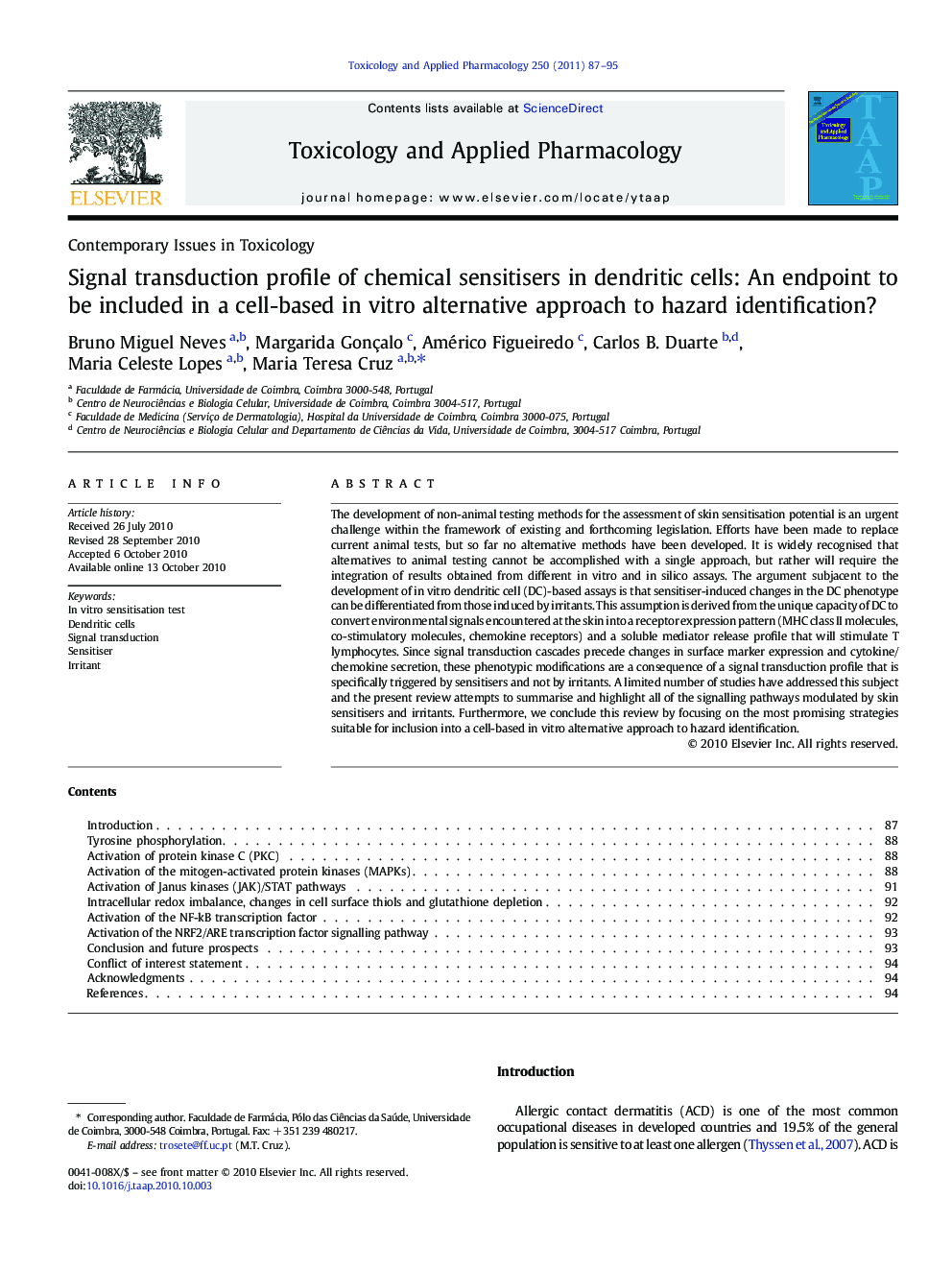| Article ID | Journal | Published Year | Pages | File Type |
|---|---|---|---|---|
| 2569893 | Toxicology and Applied Pharmacology | 2011 | 9 Pages |
Abstract
The development of non-animal testing methods for the assessment of skin sensitisation potential is an urgent challenge within the framework of existing and forthcoming legislation. Efforts have been made to replace current animal tests, but so far no alternative methods have been developed. It is widely recognised that alternatives to animal testing cannot be accomplished with a single approach, but rather will require the integration of results obtained from different in vitro and in silico assays. The argument subjacent to the development of in vitro dendritic cell (DC)-based assays is that sensitiser-induced changes in the DC phenotype can be differentiated from those induced by irritants. This assumption is derived from the unique capacity of DC to convert environmental signals encountered at the skin into a receptor expression pattern (MHC class II molecules, co-stimulatory molecules, chemokine receptors) and a soluble mediator release profile that will stimulate T lymphocytes. Since signal transduction cascades precede changes in surface marker expression and cytokine/chemokine secretion, these phenotypic modifications are a consequence of a signal transduction profile that is specifically triggered by sensitisers and not by irritants. A limited number of studies have addressed this subject and the present review attempts to summarise and highlight all of the signalling pathways modulated by skin sensitisers and irritants. Furthermore, we conclude this review by focusing on the most promising strategies suitable for inclusion into a cell-based in vitro alternative approach to hazard identification.
Related Topics
Life Sciences
Environmental Science
Health, Toxicology and Mutagenesis
Authors
Bruno Miguel Neves, Margarida Gonçalo, Américo Figueiredo, Carlos B. Duarte, Maria Celeste Lopes, Maria Teresa Cruz,
